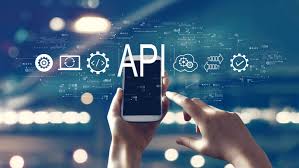In the realm of modern communication, Short Message Service (sms gateway) stands out as a pioneering technology that has revolutionized the way people connect and interact. Since its inception in the 1980s, SMS has evolved from a simple text messaging service to a multifaceted tool with far-reaching implications across various aspects of life.
A Brief History of SMS
SMS was first conceptualized in the 1980s as part of the Global System for Mobile Communications (GSM) protocol, which aimed to standardize the communication protocols for mobile devices. The first SMS was sent in 1992 by Neil Papworth, a developer working in the UK. The message, “Merry Christmas,” was sent from a computer to a mobile phone over the Vodafone network.
Initially, SMS was limited to 160 characters, a constraint imposed by the GSM protocol. This limitation, however, sparked creativity and led to the development of a new form of communication that was concise, efficient, and convenient.
The Rise of SMS in Communication
SMS quickly gained popularity due to its simplicity and ease of use. Unlike traditional phone calls, which required both parties to be available at the same time, SMS allowed people to communicate asynchronously, making it ideal for quick exchanges and non-urgent messages.
The widespread adoption of mobile phones further fueled the popularity of SMS. As mobile phones became more affordable and accessible, SMS emerged as a ubiquitous form of communication, transcending geographical boundaries and social barriers.
SMS in the Digital Age
With the advent of smartphones and mobile messaging apps, such as WhatsApp, Facebook Messenger, and iMessage, many predicted the decline of SMS. However, SMS has continued to thrive, particularly in areas where internet connectivity is limited or unreliable.
One of the key reasons for SMS’s resilience is its universality. Unlike messaging apps that require both parties to have the same app installed, SMS works across all mobile devices, making it the go-to communication tool for businesses, governments, and individuals alike.
SMS in Business and Beyond
SMS has found a myriad of applications beyond personal communication. Businesses use SMS for marketing campaigns, customer service, and transactional notifications. Governments use SMS for emergency alerts and public announcements. In healthcare, SMS is used for appointment reminders and medication adherence programs.
Future Trends and Challenges
Looking ahead, SMS continues to evolve, with new technologies such as Rich Communication Services (RCS) adding enhanced features like multimedia support and read receipts to traditional SMS. However, SMS also faces challenges, such as spam and security threats, which necessitate constant innovation and adaptation.
In conclusion, SMS has left an indelible mark on the landscape of communication, transforming the way we connect and interact. As we embrace new technologies and platforms, it is essential to recognize the enduring value and impact of SMS in our digital world.

